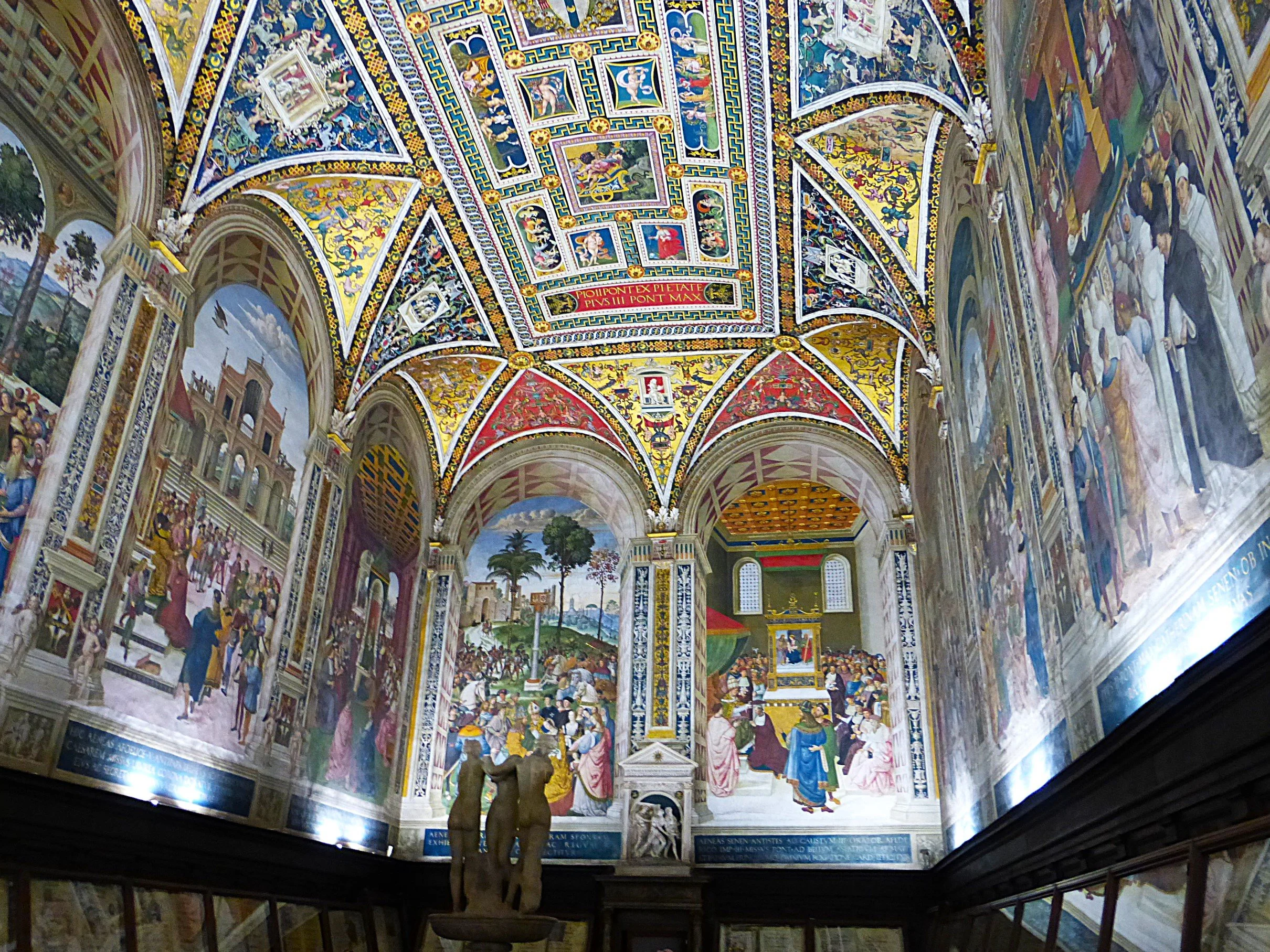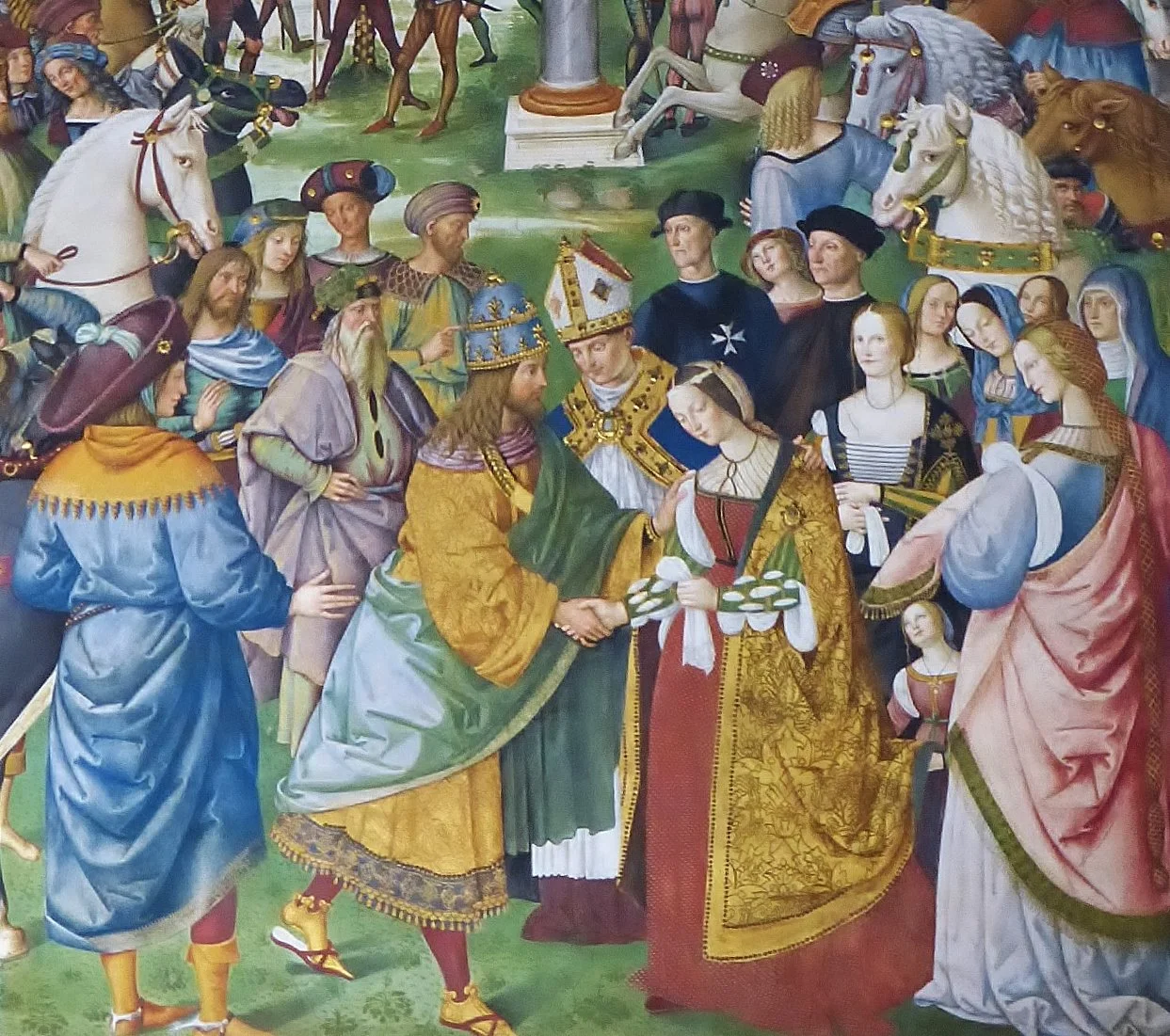Aeneas Silvius
If I asked you to name a poet of long ago, who spent his early life as an amorous and lustful rake, who wrote verses celebrating sensuous pleasure, and who in mid-life became a devout and sober preacher, and a high official of his church, who would you guess? John Donne? An excellent choice – Donne, who eventually became Dean of St. Paul’s, wrote memorably of both the sacred and the profane.
Young Aeneas leaves on his first diplomatic mission
This is a column about Italian culture, though, so I have in mind another remarkable man, Aeneas Silvius Piccolomini. He was born in 1405 in the village of Corsignano, in the Val d’Orcia of Tuscany. His parents were exiled Sienese, but at age 18 Aeneas left to attend the University in Siena. His learning, charming manner, and facile pen led him to positions as secretary and emissary of several prominent men, particularly high members of the clergy. One was Cardinal Albergati, Bishop of Bologna, who sent him, in 1435, on a secret mission to Scotland. (Its purpose is still a secret today.)
Aeneas addresses King James I of Scotland
The voyage across the North Sea was a violent one. Aeneas vowed that, if he survived, he would walk barefoot to the nearest shrine of Our Lady. When the ship landed at Dunbar, Aeneas walked ten miles barefoot, through ice and snow, to Whitekirk. In his autobiographical “Commentaries”, he described the Scotland of 1435: “It is utterly unlike the country we inhabit, being rude, uncultivated, and unvisited by the winter sun …” And, as for the people: “The men are short and brave; the women fair, charming, and easily won.” He had a child with a Scottish woman, but the baby died in infancy.
Aeneas is crowned Poet Laureate by Emperor Frederick III
Back in “civilized” Europe, Aeneas was involved in conflicts between reformers and recalcitrant Popes, became a diplomat, and wrote spicy poetry that was circulated among his many friends. He became a secretary to the Holy Roman Emperor, Frederick III, who named him Imperial Poet Laureate. He wrote an “erotic” novel called “The Tale of Two Lovers” for a noble client. (I’ve read it. “Lady Chatterley’s Lover” it’s not.)
Aeneas, now Pope Pius II, arranges the marriage of Frederick III and Eleanor of Aragon
But his profligate life began to weigh on him. He wrote to a friend: “we are older, the day of our death draws near, and now we must consider not how to live, but how to die... For me, I have sinned enough, and too much.” He was 40 years old.
For the next decade, he worked tirelessly as a diplomat, resolving conflicts between Pope Eugene IV and the German princes who had supported the Antipope Felix V. He took holy orders in 1446, became a Bishop, and held several other ecclesiastical posts over the years, all the while negotiating between competing church factions. When Pope Calixtus III died in 1458, Aeneas Silvius Piccolomini became Pope Pius II.
As Pope, his attempts to unite the squabbling Christian rulers against Ottoman advances into Europe failed, but he had success at church reform. He became a patron of the arts. He commissioned the architect Bernardo Rossellino to create an “ideal city” from his hometown, Corsignano, and renamed it Pienza. And in Siena’s Duomo, Pinturicchio’s frescoes, based on the “Commentaries,” tell Aeneas’ story in scenes as colourful as the man himself.
© Text © 2016 by Joe Gartman; Photographs © 2016 by Patricia Gartman. First published in Italia! Magazine, January 2016




